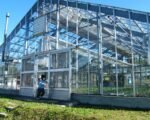The invention of cigars is attributed to the ancient Mayans around 2500 BC. The Mayans cultivated tobacco for medicinal purposes and used it in various forms, including cigars. These early cigars were made by wrapping tobacco leaves in palm or plantain leaves, creating a rudimentary version of the cigars we know today. Smoking tobacco was an integral part of Mayan culture, often used in religious and ceremonial practices.

Archaeological evidence, such as pottery depicting Mayan figures smoking cigars, supports the theory that the Mayans were among the first to use tobacco in this manner. The practice of smoking tobacco spread to other indigenous cultures in the Americas, each developing their own methods and traditions. The significance of tobacco in these societies cannot be overstated, as it played a crucial role in their social and spiritual lives.
The Mayans’ use of tobacco eventually caught the attention of European explorers. When Christopher Columbus arrived in the Americas in 1492, he encountered native inhabitants smoking cigars. This discovery marked the beginning of tobacco’s journey to the Old World, where it would soon gain widespread popularity.
Introduction to Europe and Global Expansion
The introduction of cigars to Europe can be traced back to the late 15th century, following Columbus’s voyages. Spanish explorers and settlers brought tobacco back to Europe, where it quickly became a sensation. The Spanish were particularly instrumental in the development of the cigar industry, establishing the first cigar factories in Cuba and other parts of the Caribbean.
By the 16th century, cigars had become popular among European aristocracy. The demand for high-quality tobacco led to the establishment of extensive plantations in the Americas, particularly in Cuba, which became renowned for its premium cigars. The Cuban cigar industry flourished, and Havana emerged as a major hub for cigar production and trade.
The popularity of cigars continued to grow throughout the 17th and 18th centuries. In the United States, the cigar industry began to take shape in the early 19th century, with numerous factories opening to meet the increasing demand. By the mid-19th century, cigars had become a symbol of wealth and sophistication, enjoyed by prominent figures and the general public alike.
Modern Era: The Rise of the Cigar Industry
The 19th century was a period of significant growth and innovation for the cigar industry. Advances in manufacturing techniques and the establishment of large-scale factories allowed for mass production of cigars. This period also saw the rise of iconic cigar brands and the development of distinct cigar styles and blends.
Cigars became deeply embedded in popular culture, often associated with luxury and leisure. Famous personalities, such as Mark Twain and Winston Churchill, were known for their love of cigars, further cementing their status as a symbol of refinement. The cigar’s allure extended beyond the elite, becoming a popular pastime for people from all walks of life.
In the 20th century, the cigar industry faced challenges, including economic fluctuations and changing social attitudes towards smoking. Despite these challenges, cigars have maintained their appeal, with a dedicated following of enthusiasts and collectors. Today, the cigar industry continues to thrive, with a diverse range of products available to suit every taste and preference.
Emily Wilson is a talented wordsmith whose passion for cannabis shines through in her eloquent articles that explore the plant’s cultural significance and historical context. With a focus on arts and lifestyle, she weaves together narratives that celebrate the creativity, innovation, and community fostered by cannabis enthusiasts worldwide. Emily’s unique perspective and engaging storytelling invite readers to embark on a journey of discovery and appreciation for the diverse facets of the cannabis experience.








